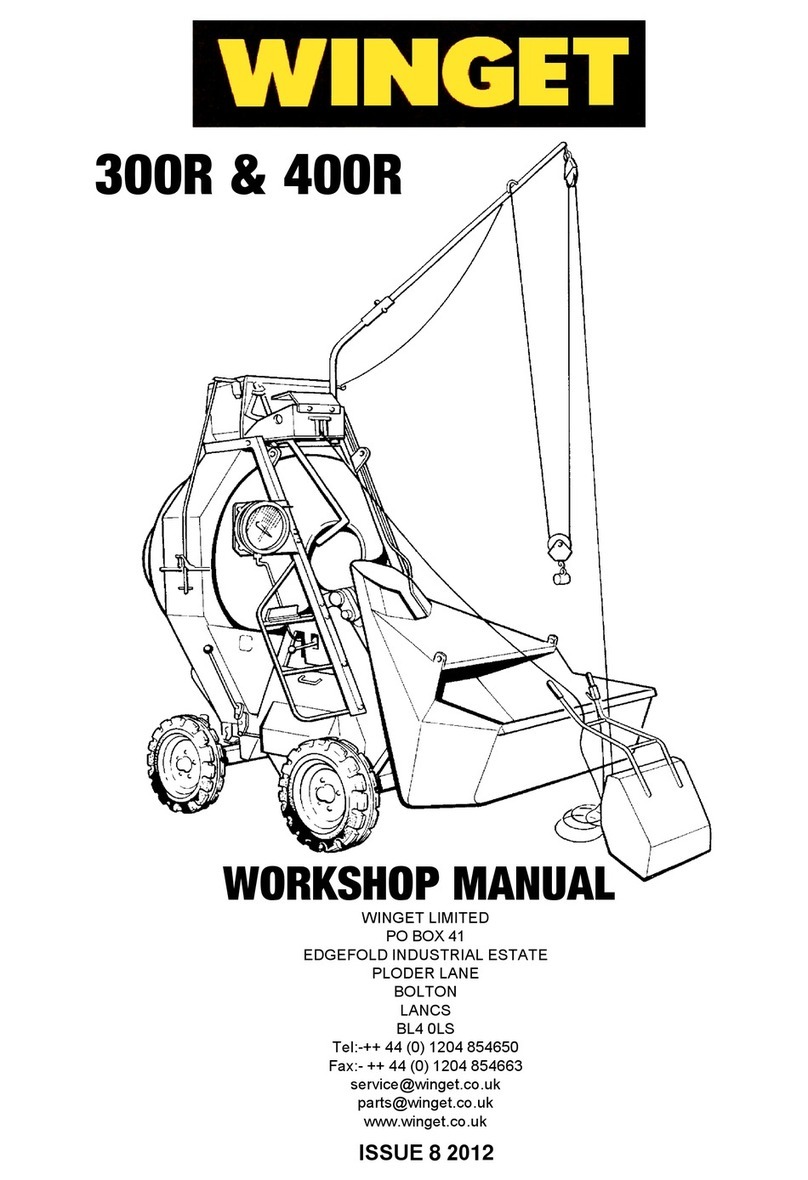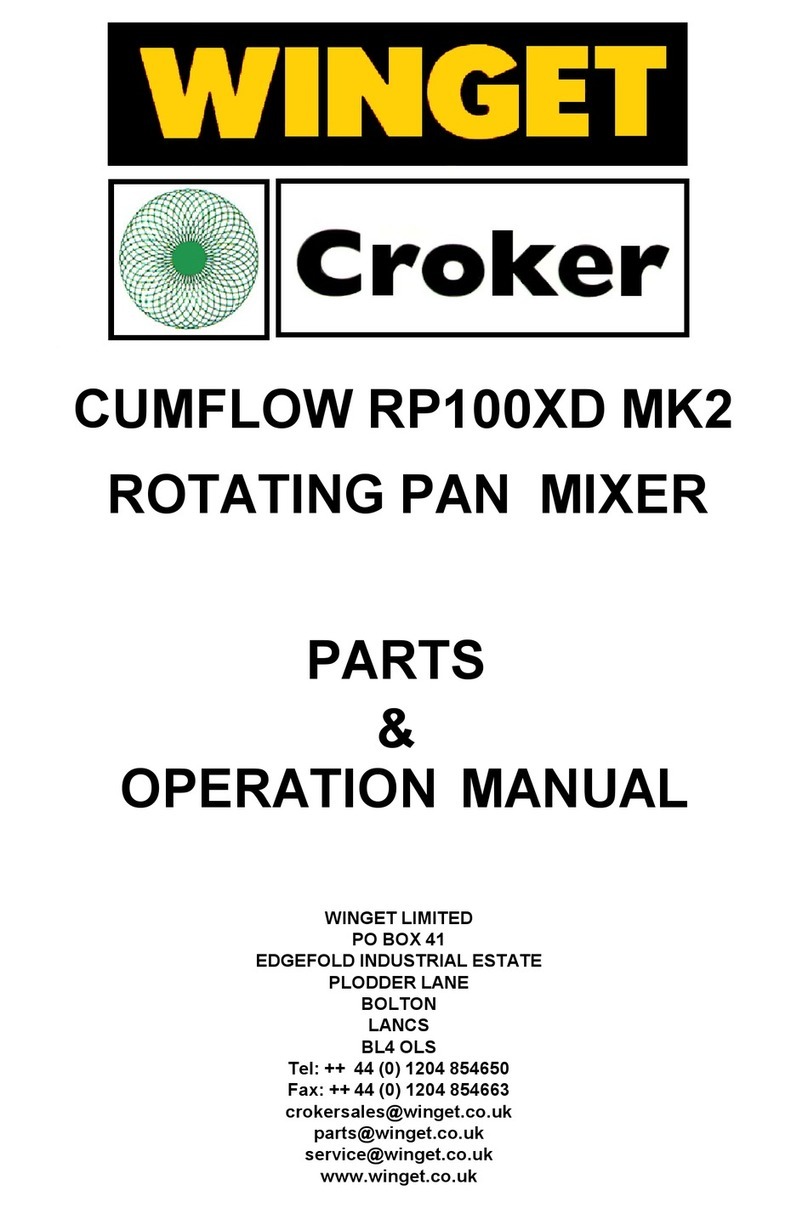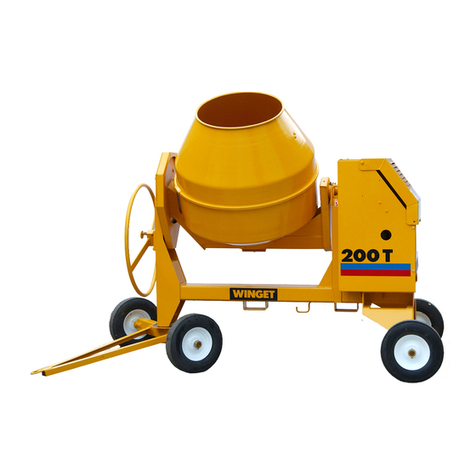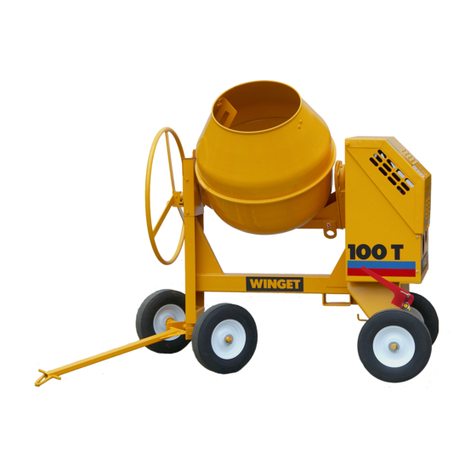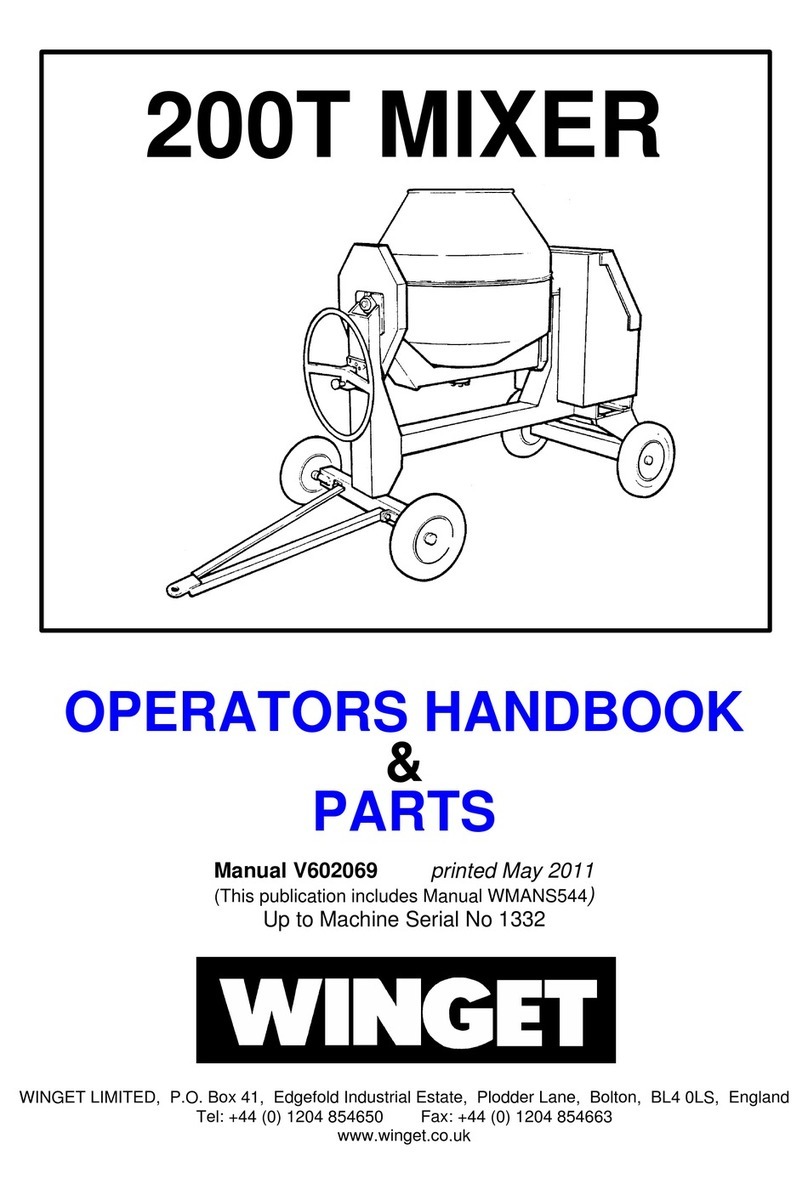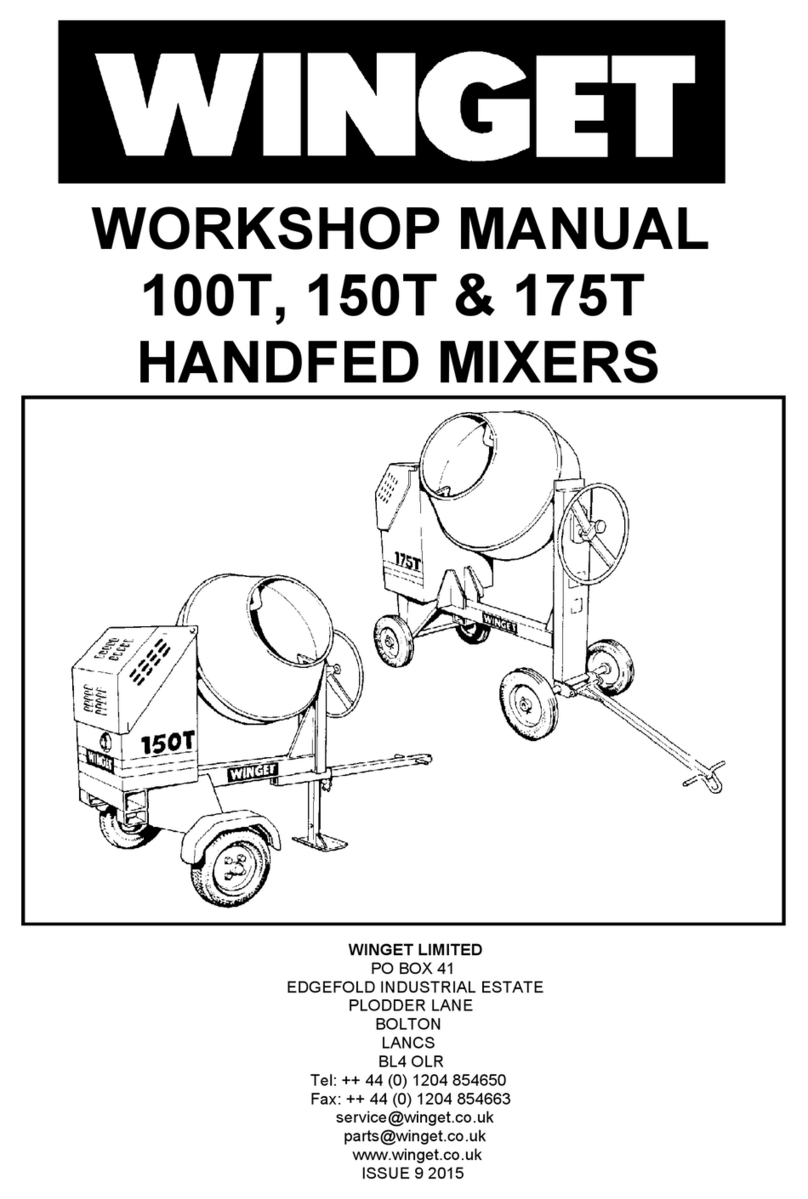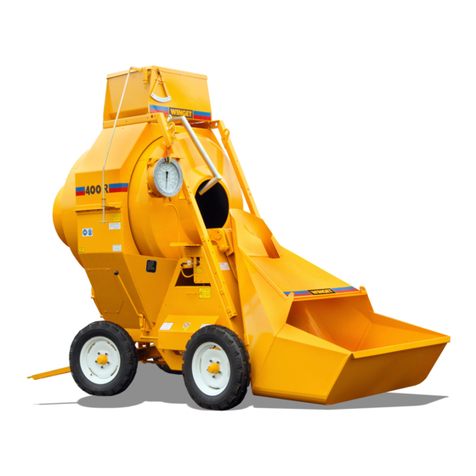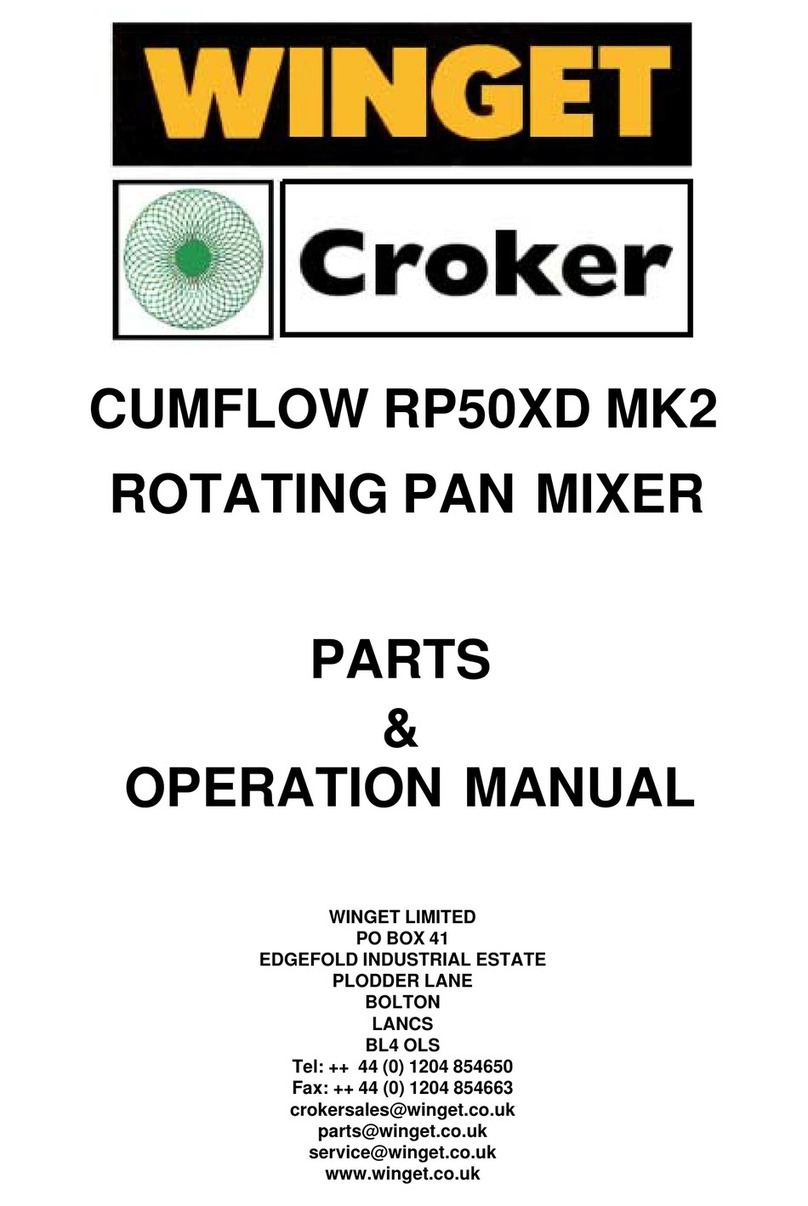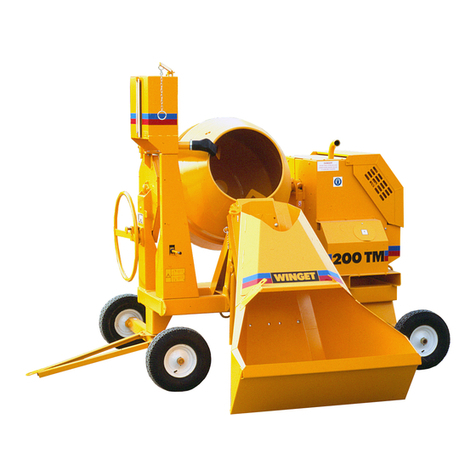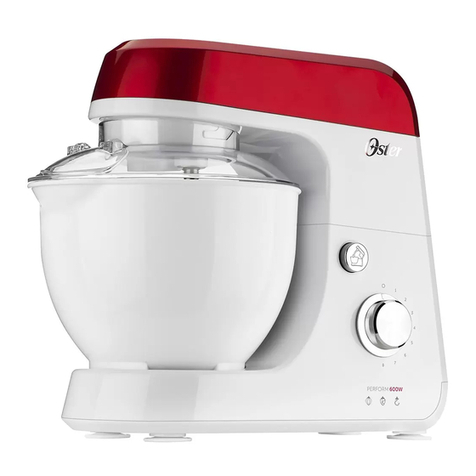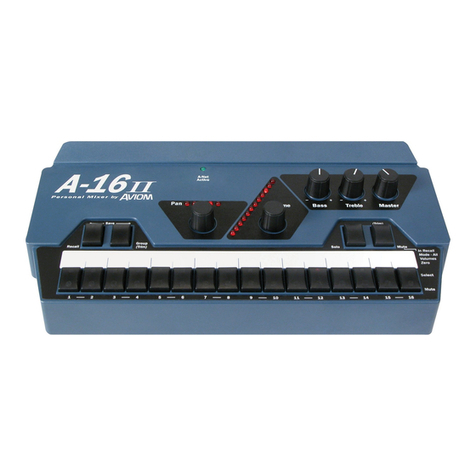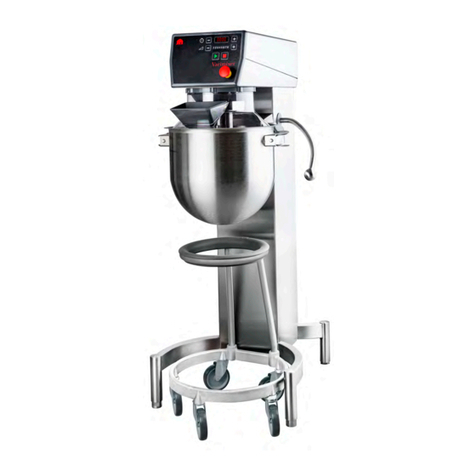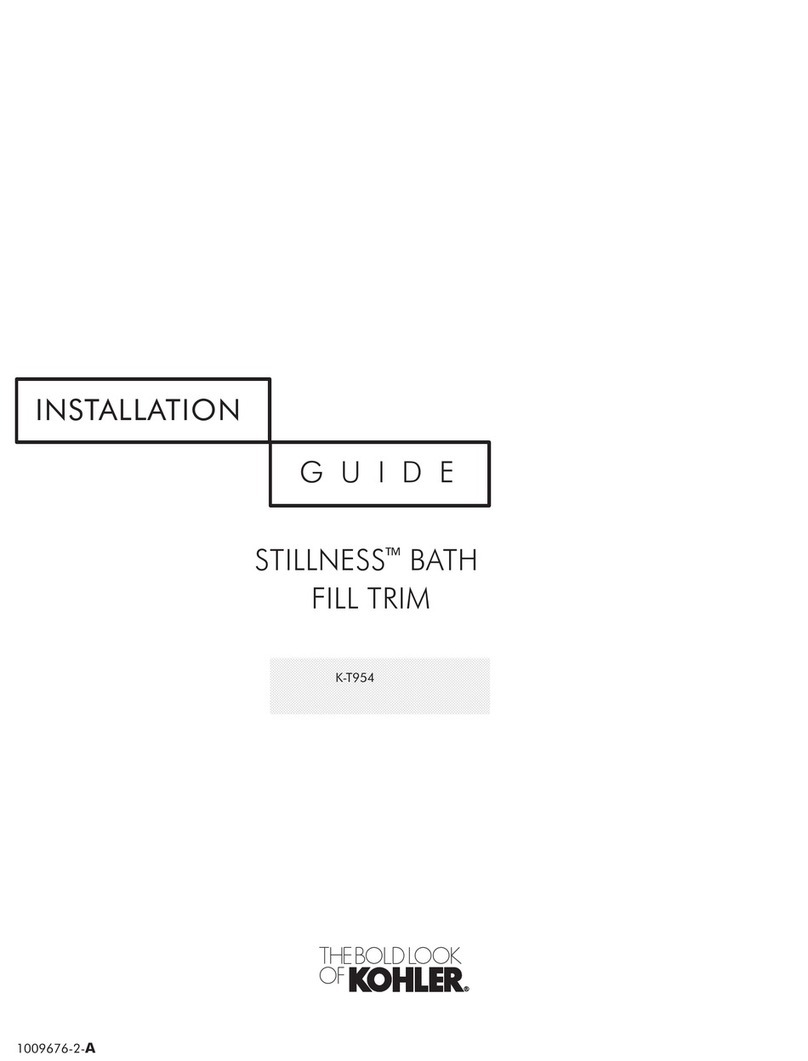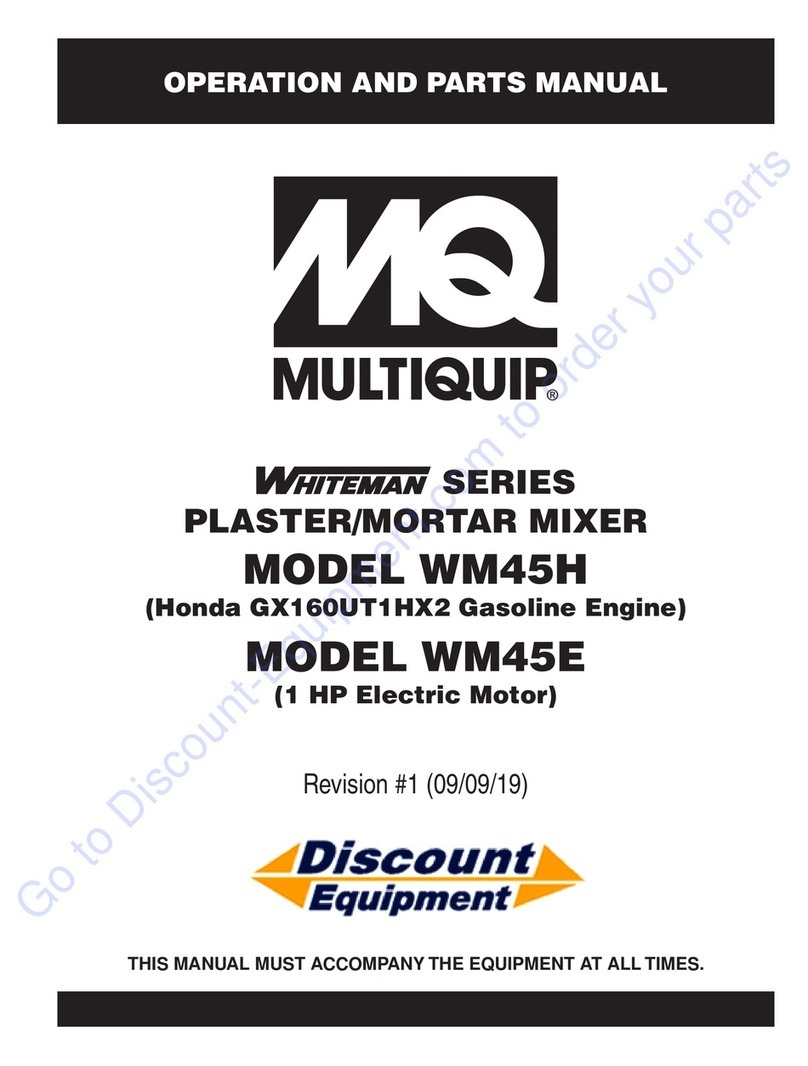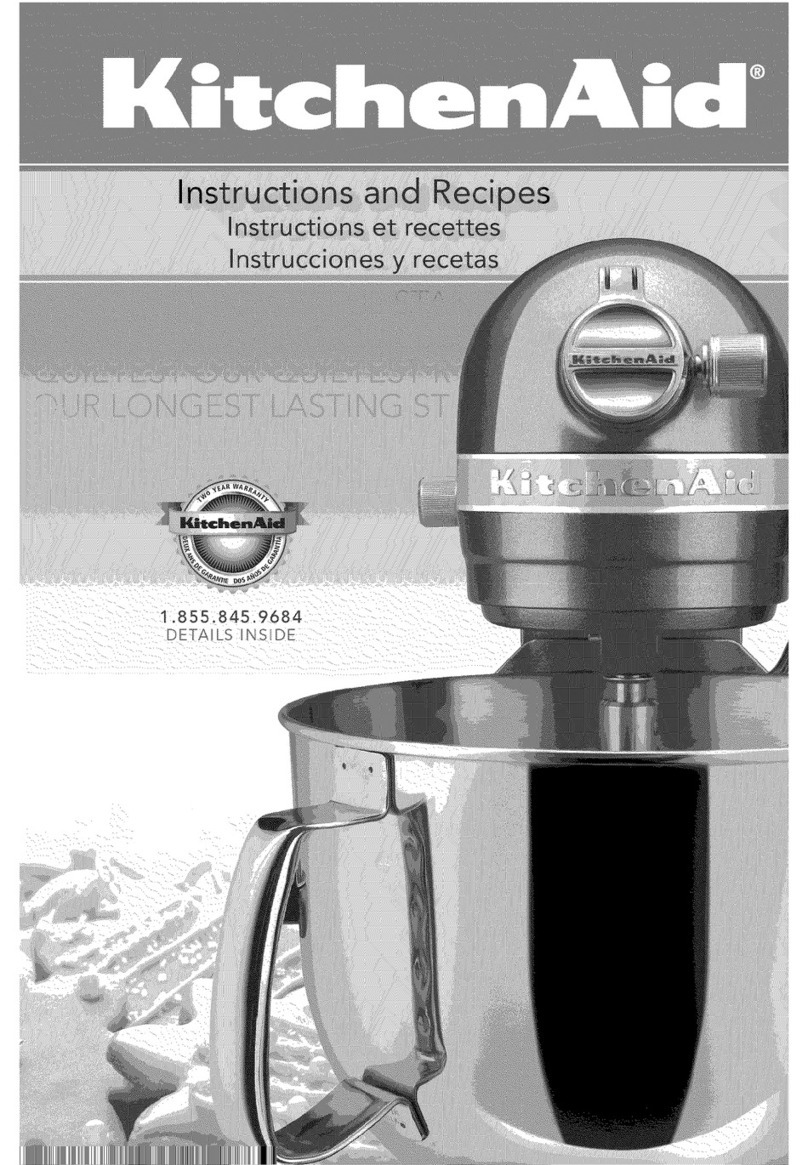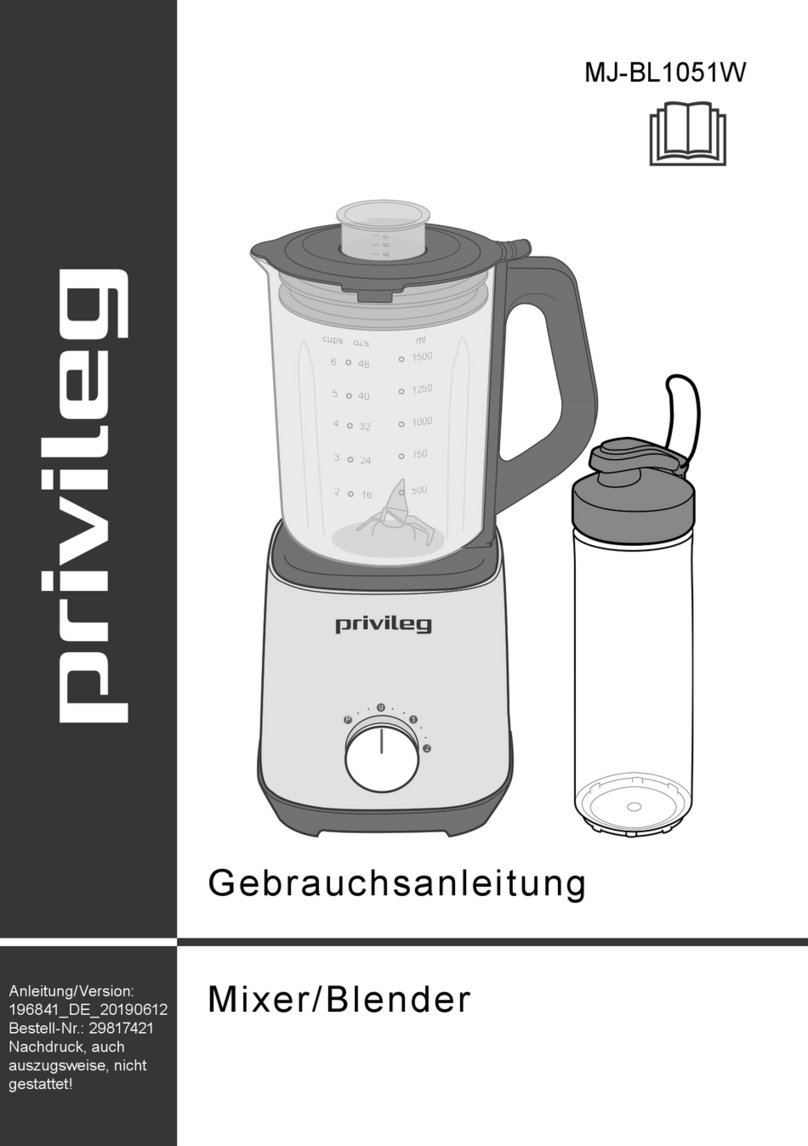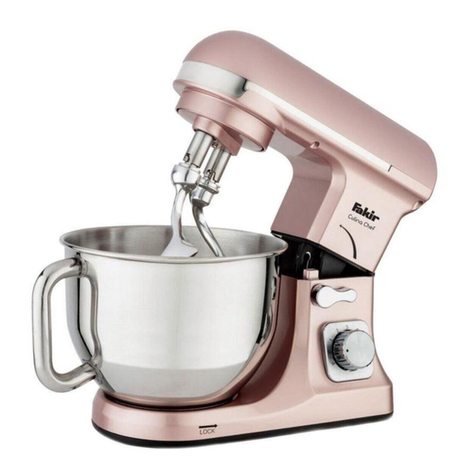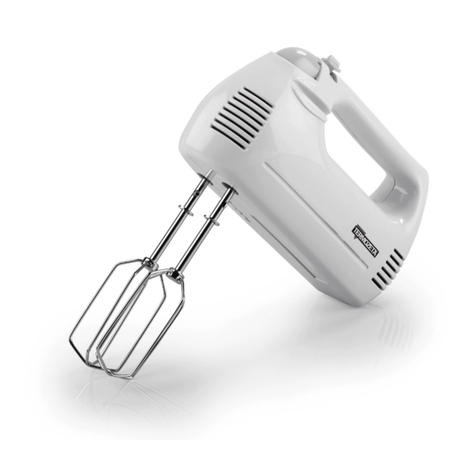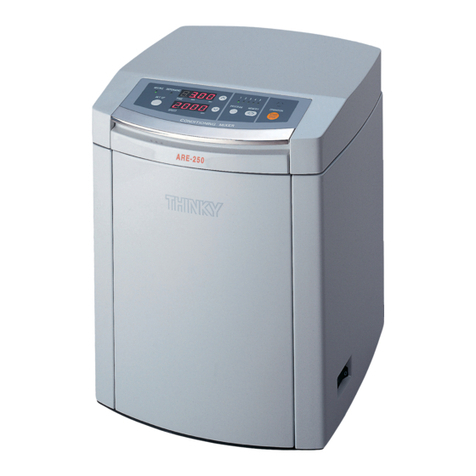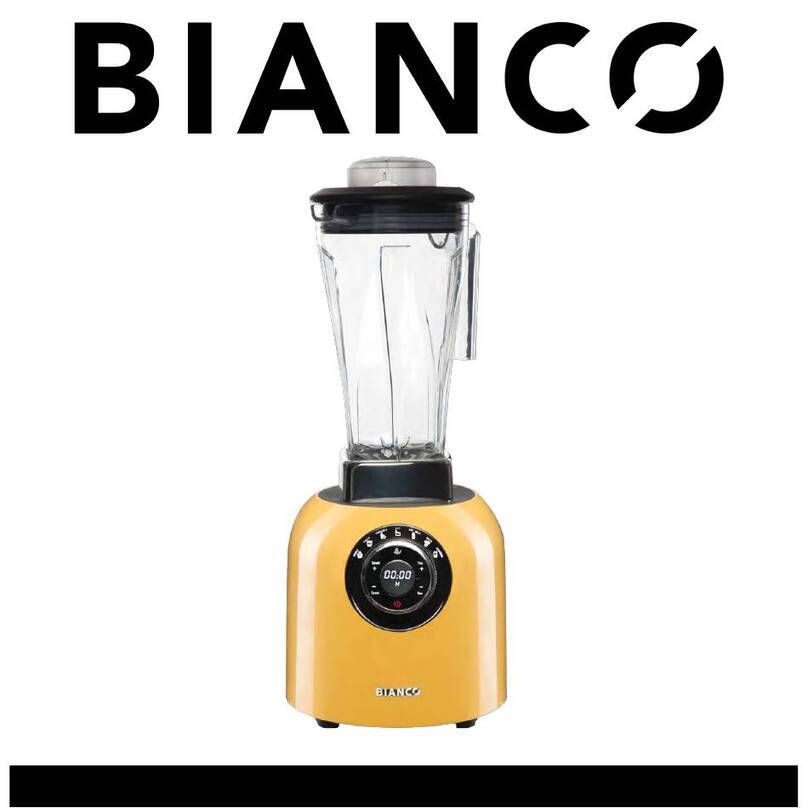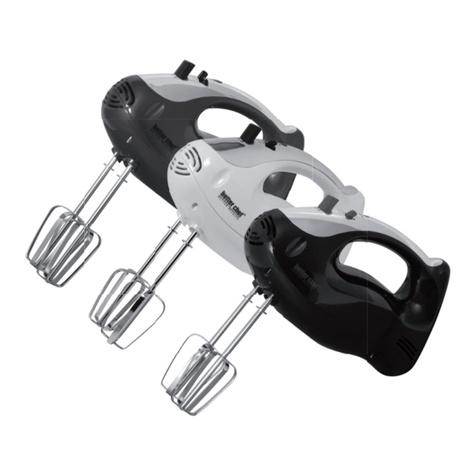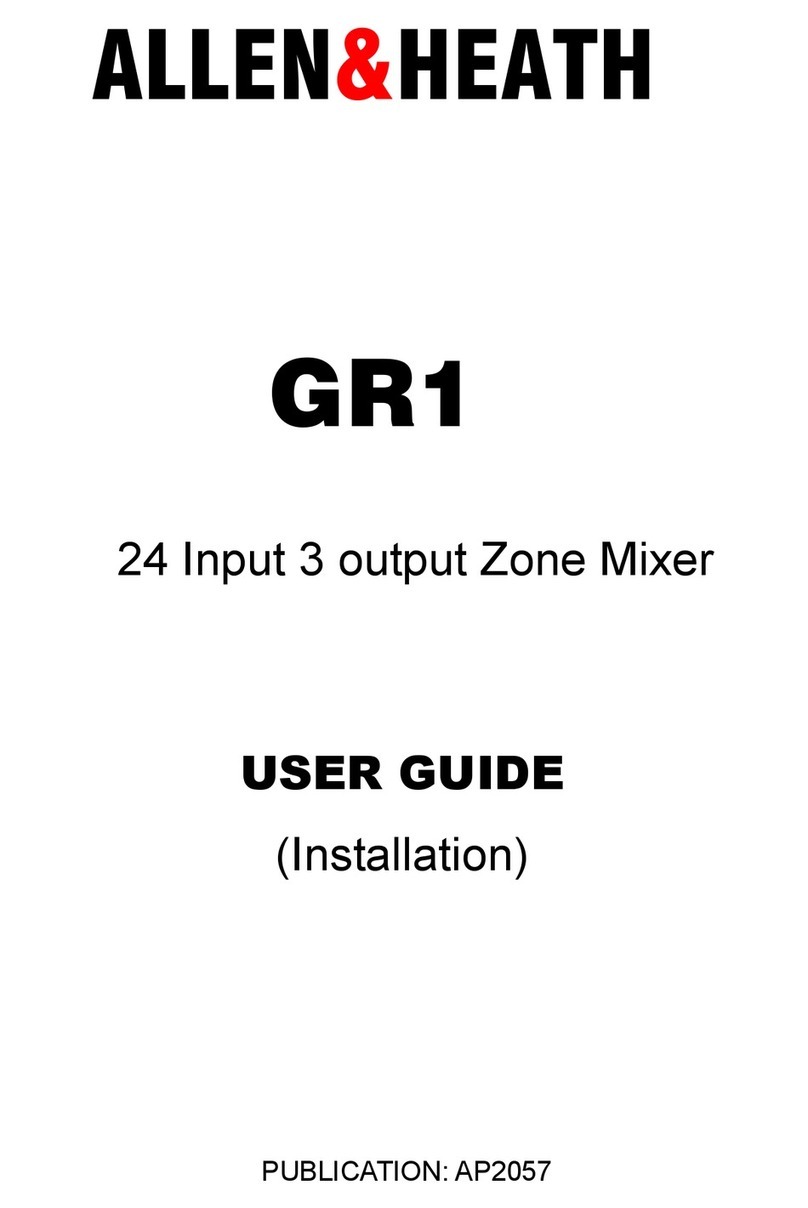
General
Care should be taken when lifting or
transporting the mixer to ensure that lifting
or retaining straps are in good condition
and the following procedures must be
followed when lifting or lashing down to
avoid causing unnecessary damage.
It is recommended that chains or webbing
slings are used to lift the mixer via the
lifting point on the trunnion and that
ratchet type webbing straps are used to
lash the mixer down.
Lifting the Mixer (Crane)
Turn the drum and trunnion through
180deg. and, using the locking pin in the
tilting handwheel, lock the assembly in this
position with the lifting eye 'A' uppermost.
Attach suitable lifting equipment to the
lifting eye and slowly take the weight. Do
not 'snatch' the mixer otherwise damage
may be caused to the lifting point, trunnion
or lifting equipment. To prevent the
drawbar swinging freely as the mixer
clears the ground, rest the drawbar’s 'T'
handle on the mainframe below the
upturned drum. If the mixer is on site and
the wheels are immersed in dried
concrete or mortar the wheels must be
freed before attempts are made to lift the
mixer. Be aware that the mixer will tend to
swing as it clears the ground.
Lifting the Mixer
(Forklift/Telehandler)
Using the tilting handwheel locking
plunger, lock the drum upright as
illustrated overleaf. If the wheels are
immersed in dried concrete or mortar, free
them before attempting to lift the mixer.
Spread the fork tines and carefully
position the forks below the mainframe so
that one
tine enters and passes through the
bracket 'B' below the mainframe, the other
fork should be spread as wide as
possible. Position the carriage as close as
possible to the mixer and rest the mixer’s
drawbar on one of the fork tines to prevent
it swinging freely.
Slowly tilt the carriage back slightly to
prevent the mixer rocking forward and
raise the mixer just clear of the ground.
Do not raise the mixer unnecessarily high,
keep the height to the minimum required
to clear any obstructions without unduly
obstructing your forward vision. When
travelling keep your speed to the minimum
and when loading vehicles do not raise
the mixer to the height of the bed until the
mixer is close to the vehicle. Similarly
when unloading vehicles lower the mixer
just clear of the ground as soon as it
clears the side of the vehicle.
Lashing down & Lifting points
